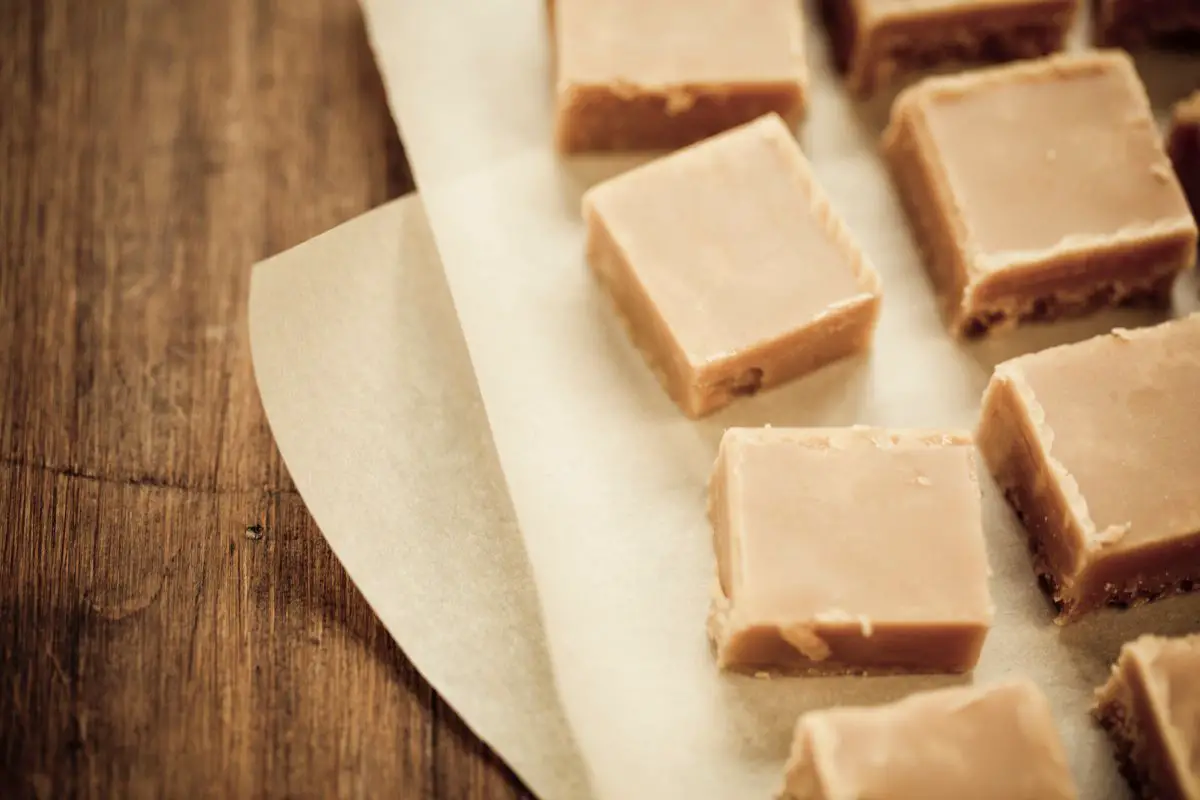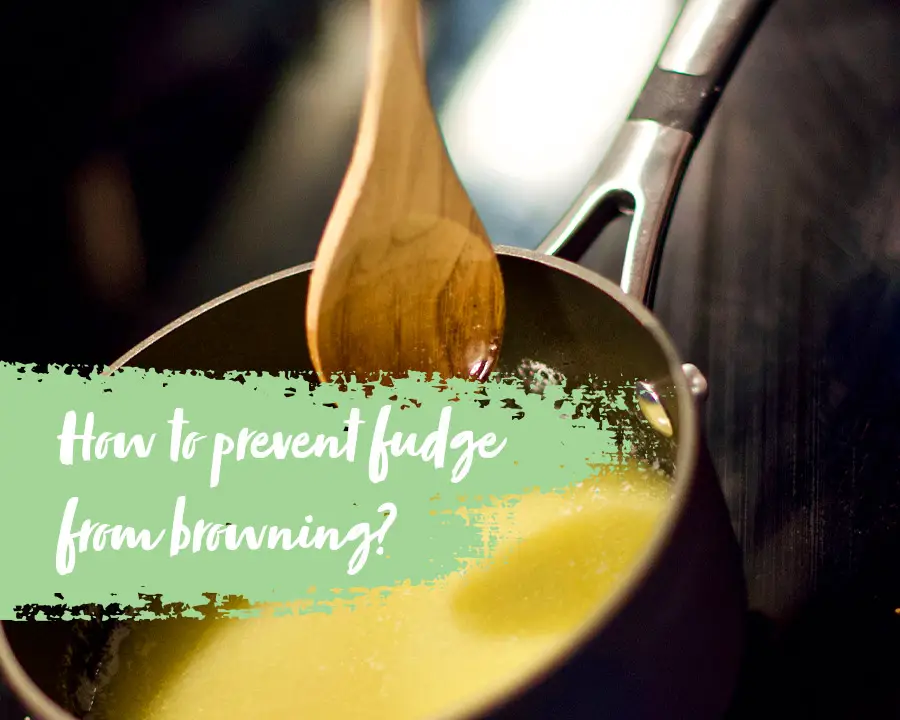Making fudge can be a delightful and indulgent treat, but nothing can be more disappointing than when it turns out with an unsightly brown hue.
The browning of fudge not only affects its visual appeal but can also alter its flavor and texture.
Fortunately, there are simple techniques and precautions you can take to prevent your fudge from browning and ensure a delectably creamy and perfectly colored treat every time.
In this guide, we will explore the key factors that contribute to fudge browning and provide you with practical tips and tricks to achieve that picture-perfect fudge you’ve always dreamed of.
So, let’s dive in and master the art of preventing fudge from browning!
Why Should You Prevent Fudge From Browning?
Preventing fudge from browning is important for several reasons:
- Visual Appeal: Fudge is known for its smooth, creamy texture and its inviting appearance. Browning can make the fudge look unappetizing and less visually appealing, potentially deterring people from trying it.
- Flavor Preservation: Browning can alter the flavor of the fudge, giving it a slightly burnt or caramelized taste. By preventing browning, you can preserve the true flavors of the ingredients and ensure a rich, decadent taste experience.
- Texture Consistency: Browning can affect the texture of the fudge, making it grainy or harder than desired. By keeping the fudge from browning, you can maintain a soft, smooth, and melt-in-your-mouth consistency.
- Aesthetic Presentation: Fudge is often used for decorative purposes, such as gift-giving, dessert tables, or special occasions. Preventing browning ensures that your fudge looks visually pleasing, enhancing its overall presentation and making it a standout treat.
- Quality Control: By preventing browning, you can maintain a high standard of quality for your fudge. Ensuring that it retains its desired color, showcases your attention to detail and commitment to producing top-notch confections.
What Causes Fudge To Brown?
Several factors can contribute to the browning of fudge:
- Heat And Overcooking: One of the main causes of fudge browning is excessive heat during the cooking process. When fudge is cooked at too high a temperature or for too long, the sugars in the mixture can caramelize, resulting in browning.
- Maillard Reaction: The Maillard reaction is a chemical reaction that occurs between amino acids and reducing sugars when exposed to heat. This reaction can cause browning and the development of complex flavors. If the fudge mixture is cooked for an extended period or at high temperatures, the Maillard reaction can take place, leading to browning.
- pH Imbalance: The pH level of the fudge mixture can also impact browning. A highly acidic or alkaline environment can accelerate the Maillard reaction, resulting in increased browning.
- Contaminated Utensils: Using dirty or greasy utensils, especially those with residual food particles, can introduce impurities into the fudge mixture. These impurities can promote browning during the cooking process.
- Improper Storage: Improperly storing fudge, especially in environments with high humidity or exposure to air, can cause it to brown over time.
- Oxidation: The exposure of fudge to air can lead to oxidation, resulting in browning. This is more likely to occur if the fudge is left uncovered or stored improperly.
By understanding these factors that contribute to fudge browning, you can take appropriate measures to prevent or minimize it, ensuring your fudge stays beautifully creamy and free from unwanted discoloration.

How To Stop Fudge From Browning
To prevent fudge from browning, follow these tips and techniques:
- Use A Candy Thermometer: A candy thermometer is a valuable tool for monitoring the temperature of the fudge mixture. Cook the fudge to the precise temperature specified in the recipe to avoid overcooking, which can lead to browning.
- Maintain A Moderate Heat: Cook the fudge over medium heat or as directed in the recipe. Avoid using high heat, as it can cause the sugars to caramelize and result in browning.
- Stir Constantly: Stir the fudge mixture continuously while cooking to distribute the heat evenly and prevent it from sticking to the bottom of the pan. This will help minimize the risk of browning.
- Use A Clean Pot And Utensils: Ensure that your cooking pot and utensils are clean and free from any residue or contaminants. Grease or impurities can contribute to browning. Clean them thoroughly before starting the fudge-making process.
- Control pH Levels: Check the pH level of your fudge mixture using litmus paper or a pH meter. Aim for a slightly neutral pH (around 7) to avoid an environment that promotes browning. Adjust the acidity or alkalinity if needed by adding a small amount of lemon juice or cream of tartar.
- Cover While Cooling: Once the fudge is cooked and removed from the heat, cover the pot with a lid or a clean kitchen towel. This will trap the steam and condensation, preventing the surface of the fudge from drying out and potentially browning.
- Store Properly: After cutting the fudge into pieces, store them in an airtight container to protect against air exposure and prevent oxidation. Keep the container in a cool, dry place away from direct sunlight.
By following these preventive measures, you can significantly reduce the chances of your fudge browning and ensure a beautiful, creamy, and delicious final product.
Fudge-Making Tips
Here are some helpful tips for making fudge:
- Use a reliable recipe: Start with a trusted fudge recipe from a reputable source. Fudge-making can be precise, so it’s essential to follow a recipe that has been tested and provides accurate measurements and instructions. At Call Me Fudge, our fudge recipes have been tried and tested in our kitchens, so you can trust our recipes. We recommend starting with our Apple Pie fudge recipe.
- Use high-quality ingredients: Select high-quality ingredients for your fudge, including fresh butter, pure vanilla extract, and good-quality chocolate or cocoa powder. The quality of ingredients will greatly impact the flavor and texture of your fudge.
- Measure accurately: Accurate measurements are crucial in fudge-making. Use measuring cups and spoons for dry ingredients and a kitchen scale for precise measurements of butter and chocolate.
- Use a heavy-bottomed pan: Choose a heavy-bottomed saucepan for cooking the fudge. This helps distribute heat evenly and prevents scorching or burning.
- Stir frequently: Stir the fudge mixture constantly while it’s cooking to prevent it from sticking to the bottom of the pan and to ensure even heat distribution. Be sure to use a heatproof spatula or wooden spoon to avoid scratching the pan.
- Don’t rush the process: Fudge-making requires patience. Allow the mixture to heat gradually and come to a boil slowly. Rushing this step can result in grainy or unevenly cooked fudge.
- Avoid overcooking: Cook the fudge mixture just until it reaches the desired temperature specified in the recipe. Overcooking can lead to a dry and crumbly texture.
- Beat the fudge properly: Once the fudge has cooled slightly and thickened, beat it vigorously until it starts to lose its gloss and becomes thick and creamy. This process, known as “beating” or “creaming,” helps to create a smooth and velvety texture.
- Add mix-ins at the right time: If you’re adding mix-ins like nuts, dried fruits, or marshmallows, fold them into the fudge mixture just before pouring it into the prepared pan. This ensures they are evenly distributed throughout the fudge.
Remember, practice makes perfect when it comes to fudge-making. Don’t be discouraged if your first attempts aren’t flawless.
With time, patience, and attention to detail, you’ll master the art of creating delicious homemade fudge.
How To Store Fudge
To store fudge properly:
- Allow the fudge to cool completely at room temperature.
- Cut it into individual pieces or bars.
- Place parchment or wax paper between each layer to prevent sticking.
- Store the fudge in an airtight container to protect it from air exposure.
- Keep the container in a cool, dry place, away from direct sunlight.
- If desired, you can refrigerate the fudge for extended storage, but bring it to room temperature before serving to restore its soft texture.
- Enjoy your delicious fudge within a week or follow the specific storage instructions provided in your recipe.
For more information on keeping your fudge fresh by storing it correctly, check out our guide here.
Final Thoughts
Making perfect fudge requires attention to detail, patience, and quality ingredients.
By following a reliable recipe, measuring accurately, using the right equipment, and employing proper cooking techniques, you can create smooth, creamy, and delectable fudge every time.
Remember to cook the fudge at a moderate temperature, stir continuously, and avoid overcooking.
Utilize a candy thermometer to ensure precise temperature control and achieve the desired consistency.
Incorporate any mix-ins at the appropriate time, and don’t forget to beat the fudge until it reaches a smooth and creamy texture.
Proper storage is essential to maintain the freshness and flavor of your fudge. Cut it into pieces, layer with parchment or wax paper, and store in an airtight container in a cool, dry place.
With practice and a bit of experimentation, you’ll develop your own techniques and variations to make fudge that suits your taste.
Enjoy the process, and delight in sharing your homemade fudge with friends, family, or as a special treat for yourself.
So, gather your ingredients, embrace the joy of fudge-making, and savor the sweet rewards of your efforts!


